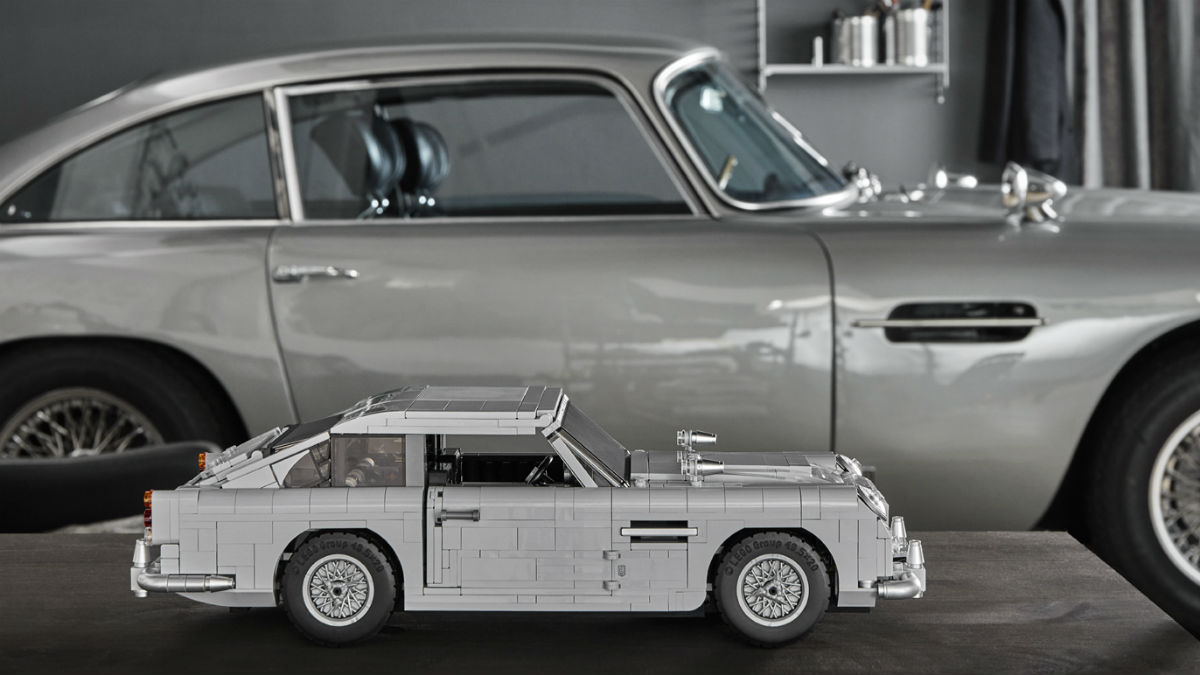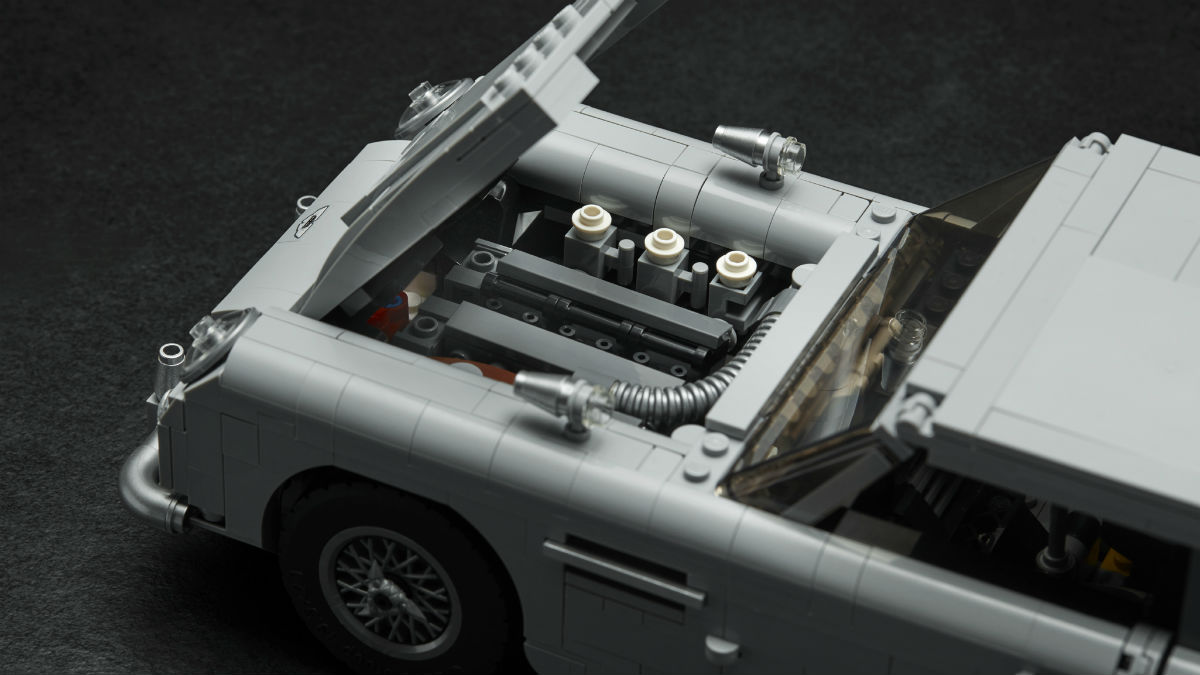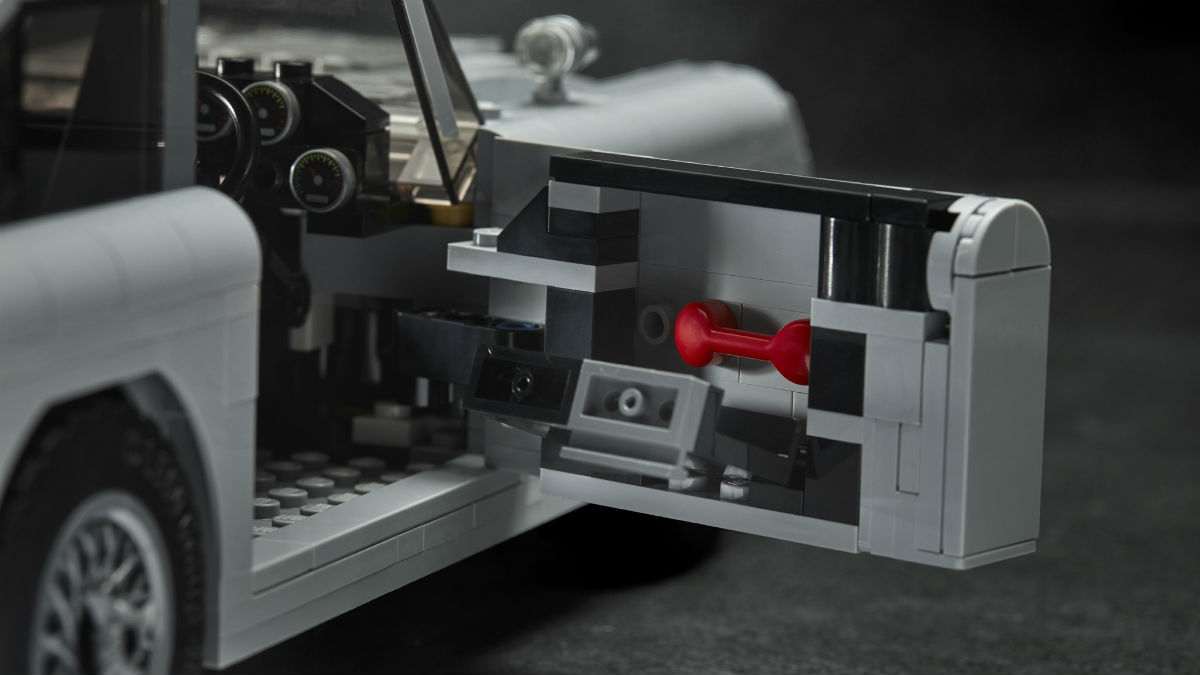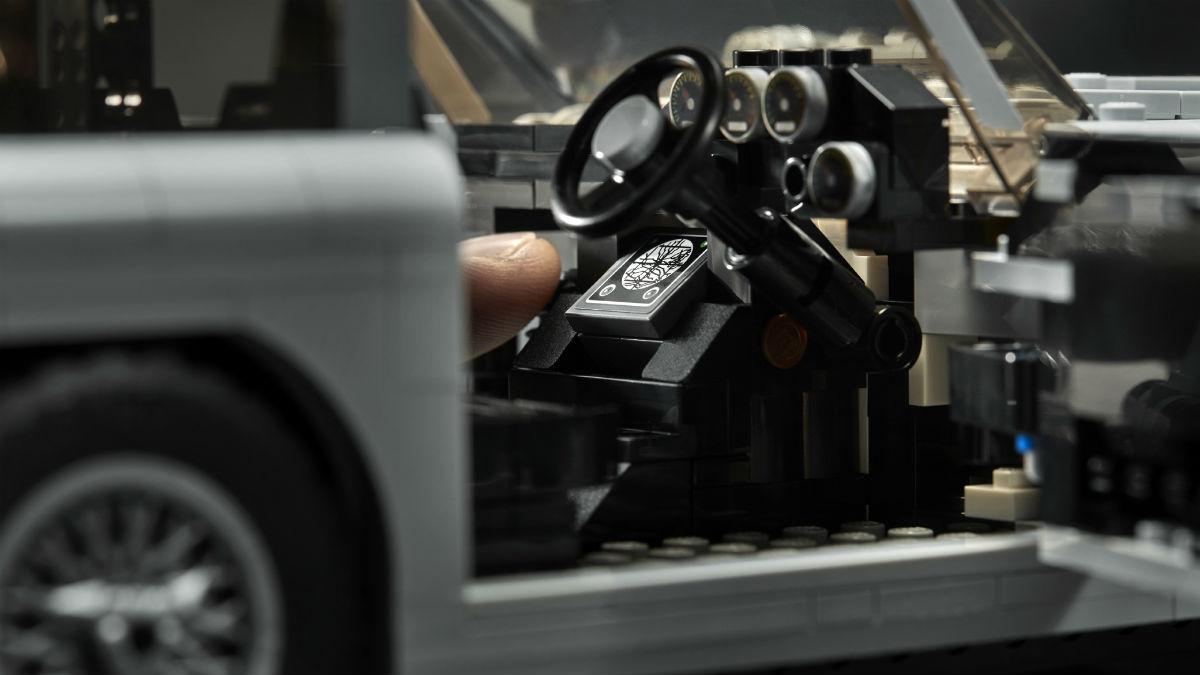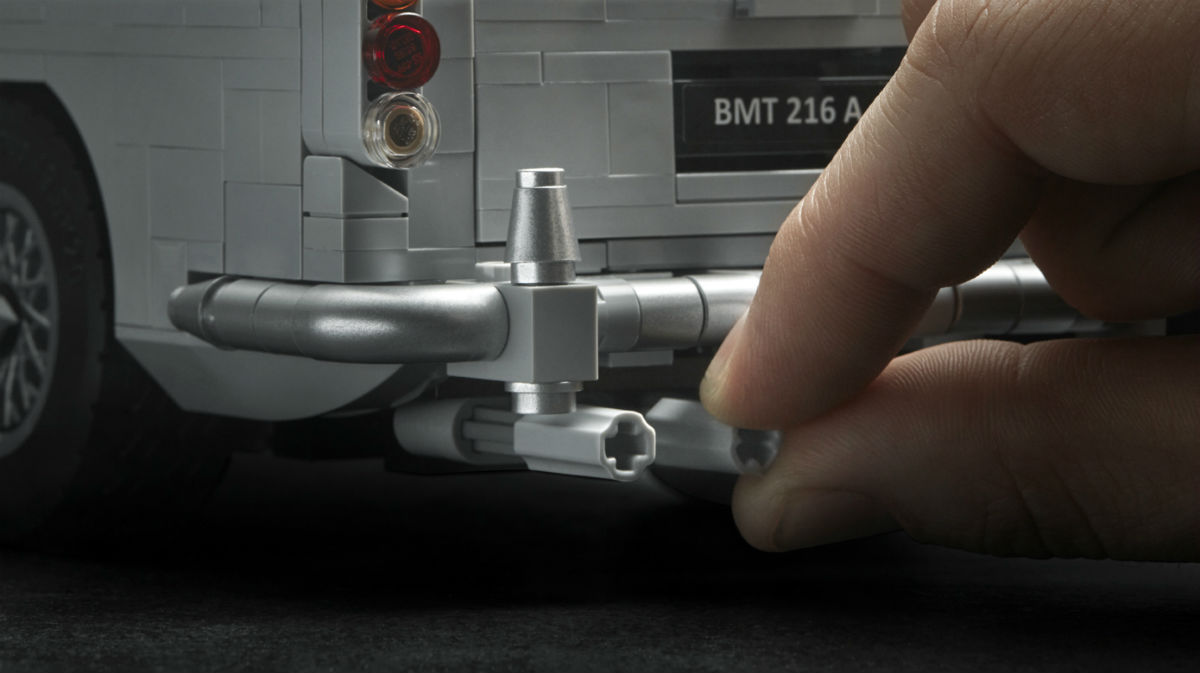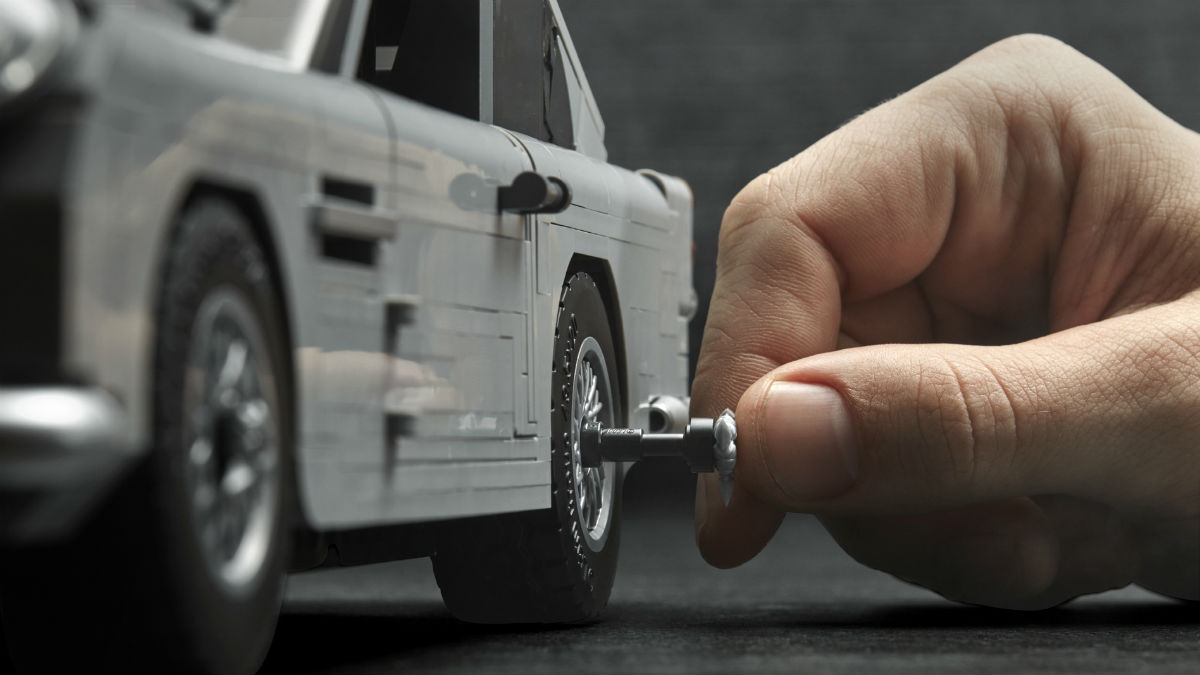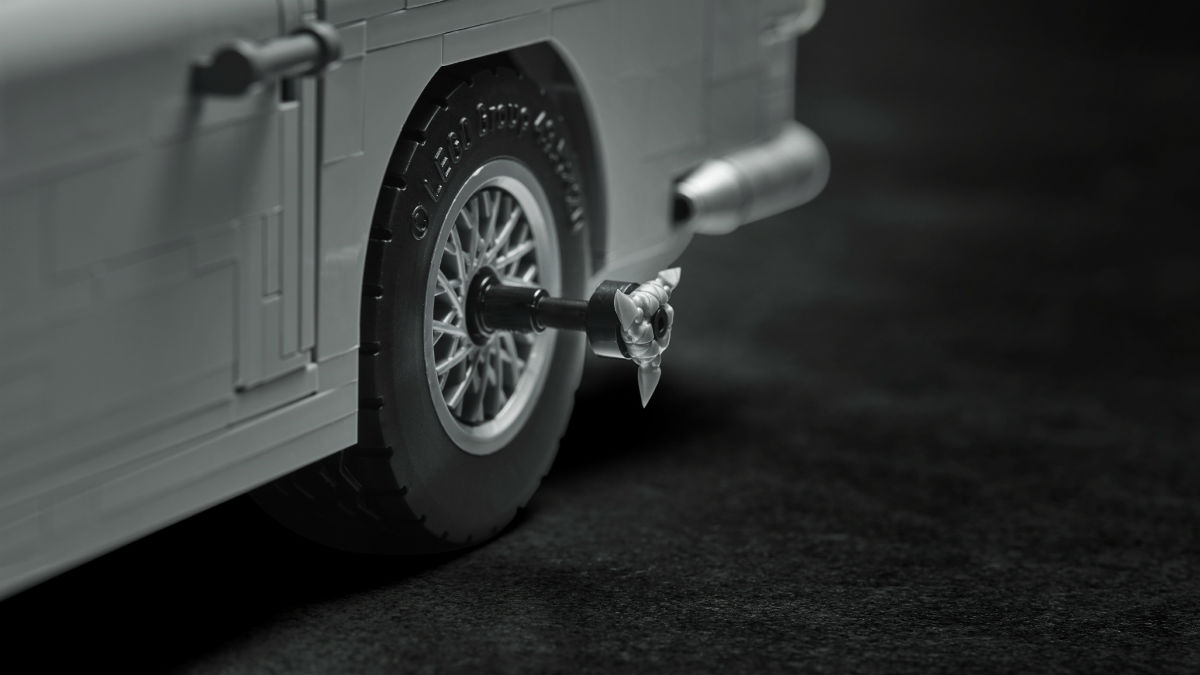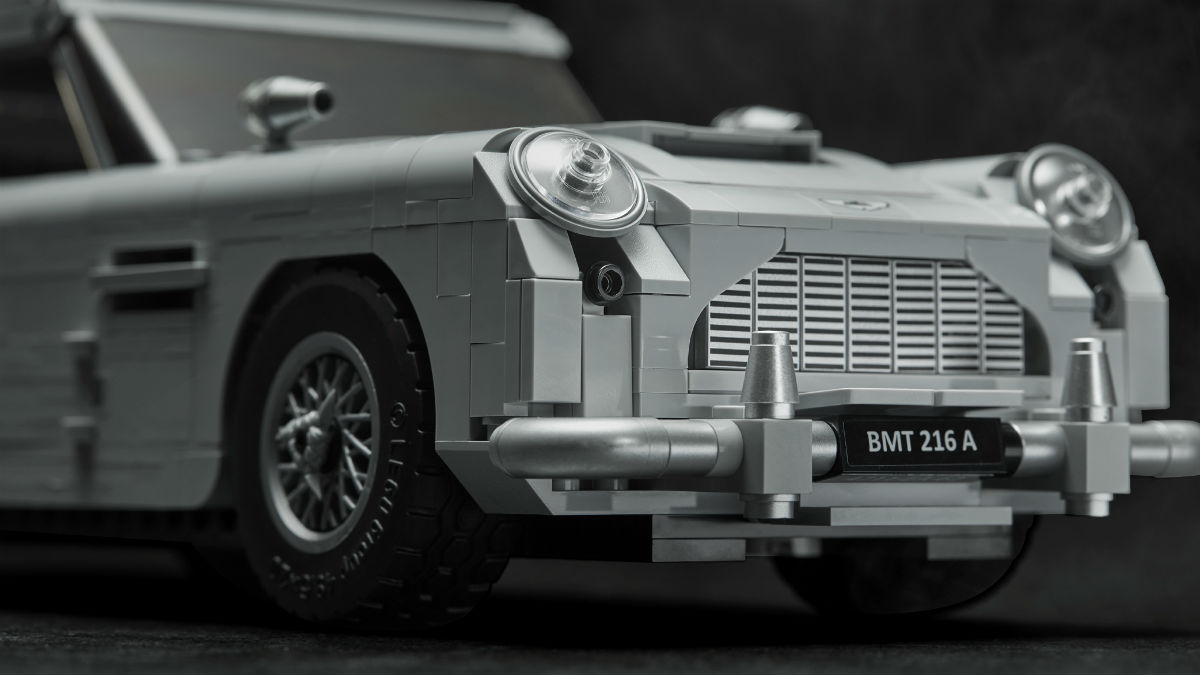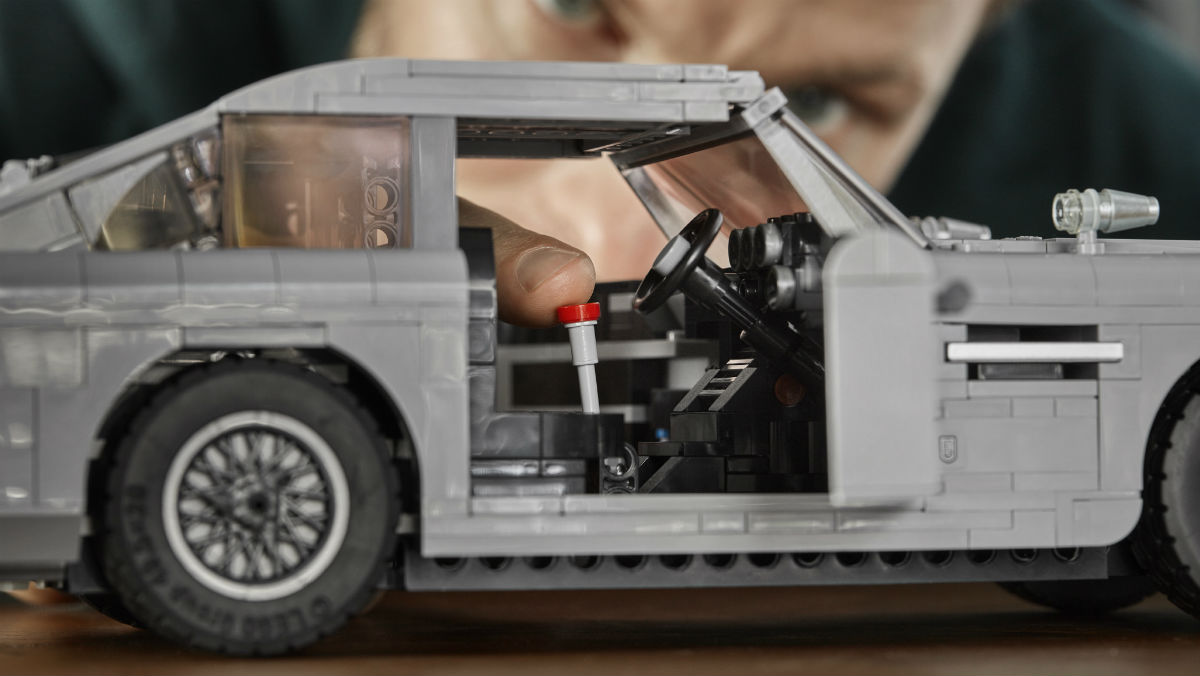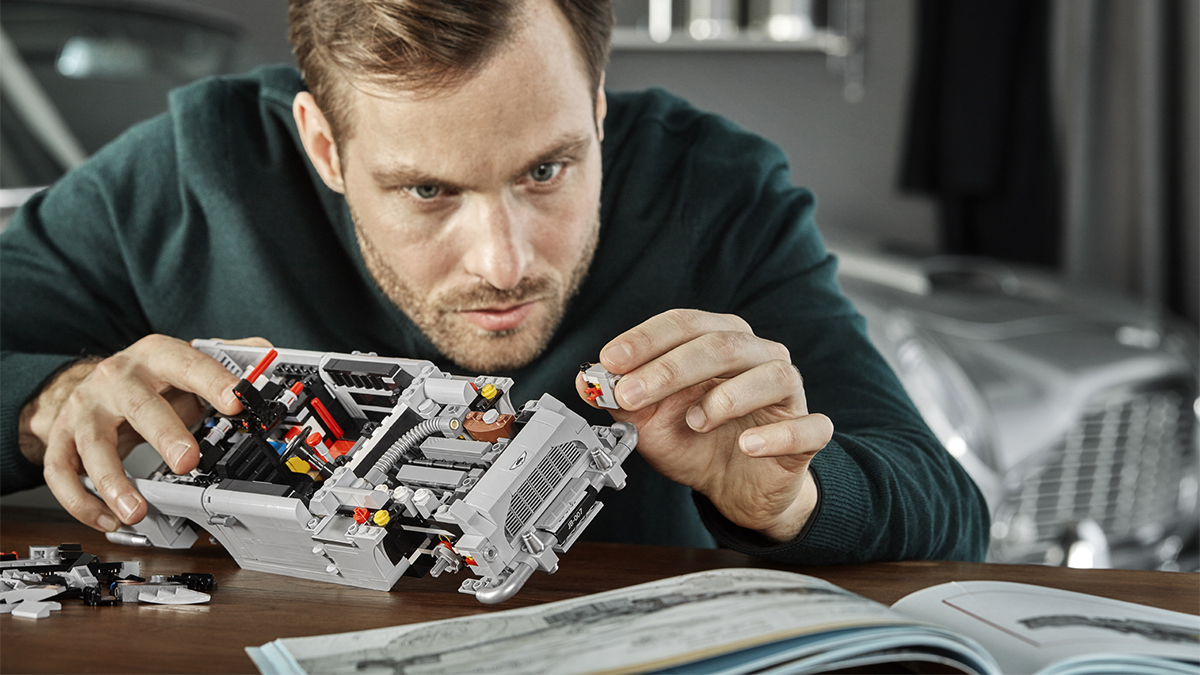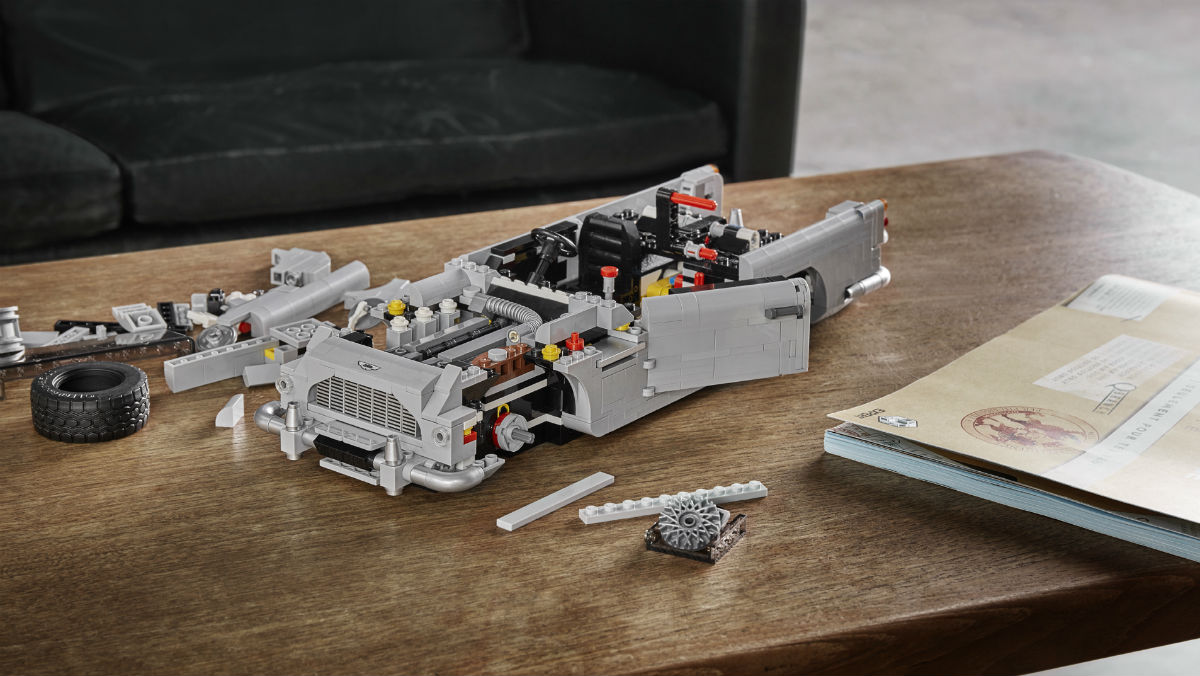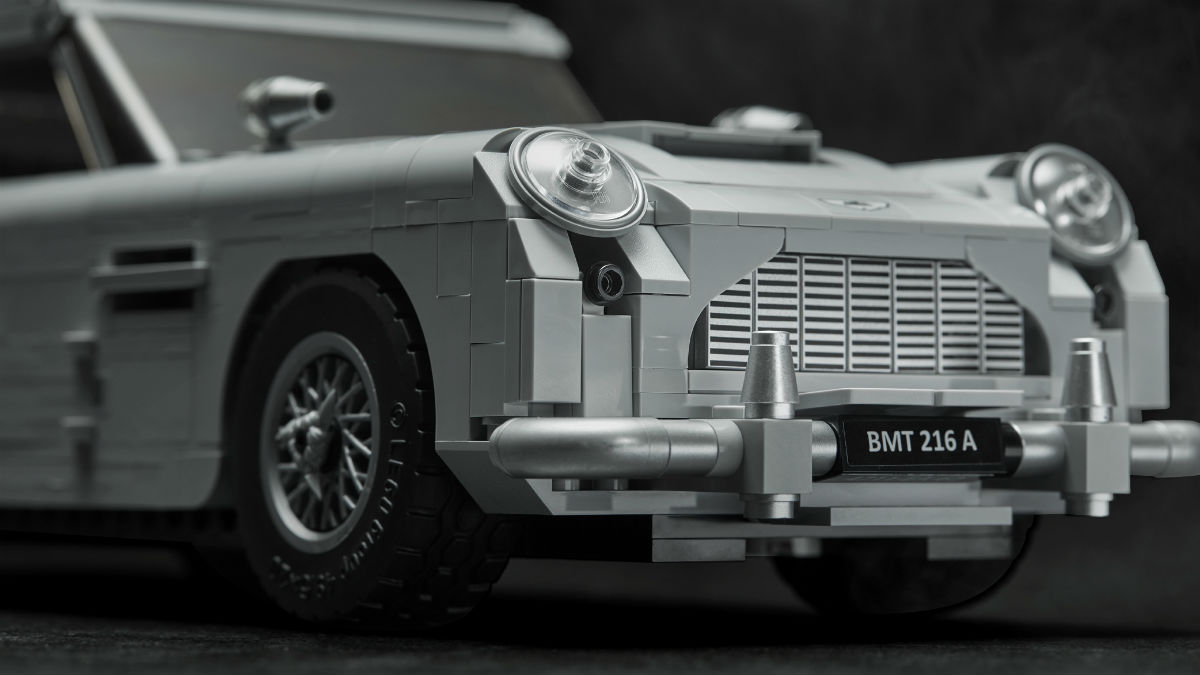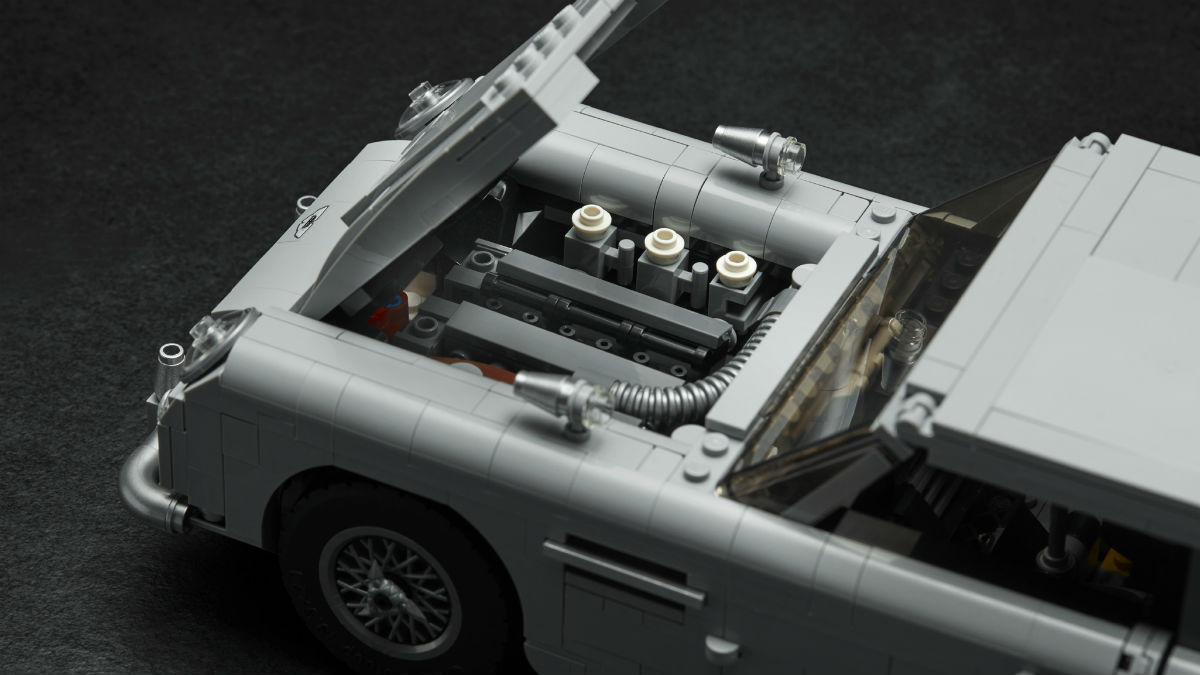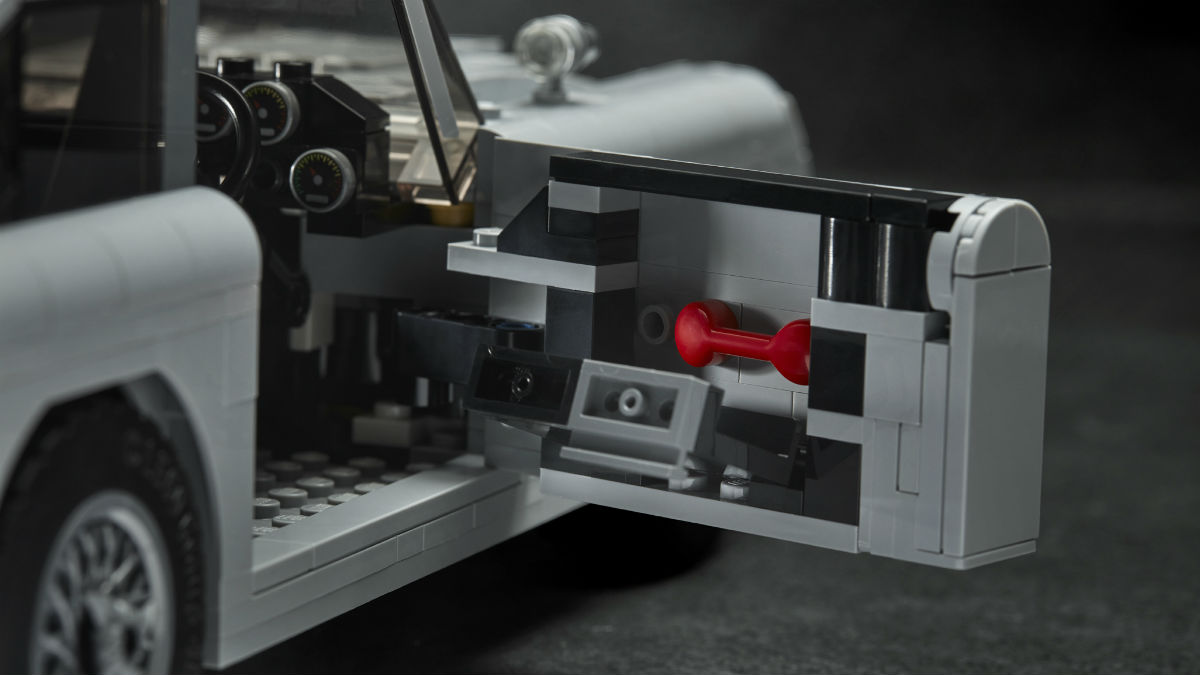Our excitement for LEGO will never die. Sure, we’ve grown up some, only now instead of 1990s Hydro Crystalization Stations and Planetary Decoders, we’re building vintage Aston Martin DB5s.
In a suspenseful reveal that took place in June (after teasing the shit out of us with promos that showed only the wheels of the set), LEGO unveiled its anticipated collaboration with James Bond: The LEGO Creator Expert James Bond Aston Martin DB5. This replica model captures the elegance and timeless sophistication of Agent 007’s iconic 1964 sports car with over 1,000 interlocking pieces.
Some early reviewers have stuck their noses up at the terrible “curves,” but we all know LEGO is synonymous with soft edges. Our consensus: this LEGO set rules.
First seen in the 1964 film Goldfinger, then again in Thunderball, GoldenEye, Tomorrow Never Dies, Casino Royale, Skyfall, and Spectre, the Aston Martin DB5 has become one of the most iconic cars in the world, especially among 007 super fans. Fun fact: James Bond author Ian Fleming first had Bond behind the wheel of a DB Mark III, but come time to film, the DB5 was the latest model released. Which is good news because if the first 007 film was released now, James Bond would drive a Cygnet with a V-8.
Knowing how effortlessly cool this car looks in real life, we suspected it might be a grueling LEGO set fit for experts (aka your parents might still need to help). Indeed, the 1,290-piece set — which goes on sale for $150 starting August 1 —might take as long to build as the James Bond canon itself, but that’s because the LEGO Aston Martin comes with a plethora of authentic details and functioning gadgetry. I bet your old LEGO sets didn’t including rotating license plates, ejector seat, tire scythes, and front-wing machine guns.
Hot dog, we’re excited about building this: Mom! Where are the Capri Suns?
Once the set is built, open the doors to discover a detailed interior with concealable tracking computer and a door compartment containing a telephone. Then, it’s time to play. Activate the passenger ejection seat, turn the rotating license plates, raise the rear-window bullet shield, deploy the wheel-mounted tire slashers, and pull back the stick shift to reveal the machine guns. The model car’s detailed engine, silver front and rear bumpers, molded silver-colored wire wheel rim inserts, and front and rear Aston Martin logos are the olives on top of an already perfect martini.
“The model has been designed to provide a challenging and rewarding building experience full of nostalgia — a must-have for fans of the Aston Martin DB5, James Bond movies, and LEGO building sets,” says LEGO in an official press release.
Indeed we’re already being shot down memory lane to our popcorn tin filled with hundreds of LEGO pieces. Now, we can relive that glory and have a collectible 007 model car to parade on the mantle with pride. (You better believe we’re putting our LEGO DB5on display.)

